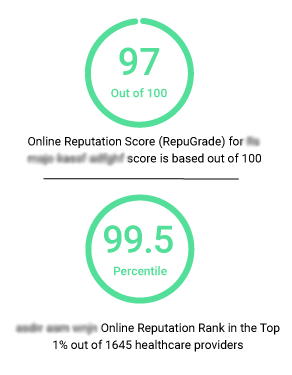Starting a New Practice? Essentials to Market a Medical Practice

The establishment of a new medical practice is a significant milestone, blending clinical expertise with entrepreneurial ambition. Beyond providing patient-centered care, building a sustainable practice requires strategic marketing. Many practitioners, eager to focus on clinical duties, often overlook crucial pre-marketing preparations. This can lead to diluted messaging and inefficient resource use, hindering growth. This guide outlines essential preparatory steps, focusing on building a strong foundation before any formal marketing strategy is implemented.
Just as a sturdy building requires a solid base, a successful medical practice needs a well-prepared marketing groundwork. This involves understanding your target patients, defining your brand, securing your online presence, ensuring legal compliance, developing marketing materials, allocating resources, and articulating your unique value. By addressing these fundamentals first, you can ensure your marketing efforts are targeted and effective, paving the way for sustainable growth and community impact.
1. Defining Your Target Patient Demographic:
Moving beyond a generalized concept of "patients" is crucial for effective marketing. Identify the specific segments you aim to serve:
- Specific Segments: Families, geriatric populations, athletes, or a niche demographic.
- Demographic Details: Age, geographic location.
- Lifestyle Patterns: Prioritization of preventative care, active living, or chronic disease management.
- Psychographic Characteristics: Values, beliefs, and attitudes towards healthcare.
- Motivations: Seeking convenience, personalized attention, or specialized treatments.
This detailed understanding will inform your messaging, channel selection, and overall marketing strategy, ensuring you attract and retain your ideal patient base.
2. Establishing Your Practice's Brand Identity
Your brand identity is more than just a visual representation; it's the embodiment of your practice's core values and the promise you make to your patients. It begins with:
- Practice Name: Selecting a name that resonates with your target demographic and reflects your specialization.
- Logo Design: Crafting a well-designed logo with thoughtful color palettes and imagery, serving as a visual anchor for instant recognition.
- Tagline: Creating a concise and compelling tagline that articulates your practice's mission and value proposition.
- Tone of Voice: Defining your communication style—whether warm and approachable or authoritative and specialized—to shape patient interactions across all platforms.
Consistency is paramount. According to a study, businesses with consistent brand presentation are 3 to 4 times more likely to experience visibility. Maintaining a unified brand experience across your website, social media, printed materials, and in-person interactions reinforces your practice's identity and builds a strong, trustworthy reputation. This deliberate and consistent branding allows patients to easily recognize and connect with your practice, fostering long-term relationships and referrals.
3. Securing Your Digital Infrastructure:
In today's digital age, a strong online presence is no longer optional for medical practices; it's a fundamental necessity. Your digital infrastructure serves as the virtual front door to your practice, often being the first point of contact for potential patients. This involves:
- Domain Name: Securing a domain name that directly aligns with your practice name, establishing a professional online identity and ensuring easy accessibility.
- Professional Email: Utilizing a professional email address, based on your domain, to enhance credibility and reinforce your brand.
- Social Media Handles: Claiming relevant social media handles across platforms relevant to your target demographic, allowing you to engage with patients, share educational content, and build community.
Crucially, the development of a HIPAA-compliant website is non-negotiable. This involves:
- HIPAA Compliance: Implementing robust security measures to protect patient data, ensuring secure online forms, and adhering to privacy regulations.
- Informative Content: Providing details on your services, team, and location.
- User-Friendly Design: Offering easy navigation and accessibility.
- Patient Tools: Utilizing the website as a powerful tool for patient education, appointment scheduling, and communication.
By investing in a secure and professional digital infrastructure, you demonstrate your commitment to patient privacy and accessibility, building trust and enhancing your practice's reputation.
4. Addressing Legal and Regulatory Compliance:
In the healthcare sector, adherence to legal and regulatory standards is not merely a suggestion; it's a fundamental obligation. Ensuring all marketing initiatives comply with:
- HIPAA Regulations: Safeguarding patient privacy by avoiding the disclosure of protected health information (PHI) in any marketing materials, digital or print.
- Local and State Guidelines: Staying informed and complying with applicable local and state regulations, which may vary by location and specialty.
These regulations often dictate the permissible forms of advertising, the content of patient testimonials, and the use of comparative claims.
Preparing comprehensive disclaimers and consent policies is crucial for protecting your practice and patients. This involves:
- Terms of Service and Privacy Practices: Clearly outlining these in written documents.
- Informed Consent: Obtaining consent from patients before using their testimonials or images in marketing.
- Disclaimers: Including disclaimers in all advertising materials to clarify the scope of services, limitations of liability, and potential side effects.
By prioritizing legal and regulatory compliance, you demonstrate your commitment to ethical practice and build a foundation of trust with your patients, mitigating the risk of legal complications and safeguarding your professional reputation.
5. Developing Core Marketing Materials
Effective communication is the cornerstone of successful marketing, and this requires the creation of comprehensive marketing materials. These assets serve as the tangible representation of your practice, conveying your expertise, values, and patient-centered approach. Key elements include:
- Practice and Team Biographies: Crafting detailed biographies that highlight professional qualifications and convey the human element, emphasizing dedication to patient care.
- High-Quality Photographs: Utilizing professional photographs of your practice, team, and facilities to create a welcoming and professional online and print presence.
- Detailed Service Descriptions: Clearly articulating the treatments and procedures offered, emphasizing benefits and addressing patient concerns.
These core marketing materials are designed to be versatile and adaptable, serving as the foundation for communication across various platforms. Your website, social media channels, and print materials will all draw from these assets. Studies indicate that visuals are processed 60,000 times faster in the human brain than text, underscoring the importance of high-quality imagery. Consistency in messaging and visual presentation is key to establishing a cohesive brand identity.
By investing time and resources into developing high-quality, informative, and engaging marketing materials, you equip your practice with the tools necessary to effectively connect with your target patient demographic, build trust, and drive patient acquisition.
6. Allocating Budget and Resources
Marketing is not merely an expense; it's a strategic investment that directly impacts the growth and sustainability of your medical practice. Therefore, developing a preliminary budget is essential for guiding your marketing efforts and ensuring effective resource allocation. This budget should encompass:
- Website Development and Maintenance: Costs associated with building and maintaining your online presence.
- Social Media Management: Expenses for content creation, scheduling, and engagement.
- Content Creation: Costs for producing articles, videos, and other marketing materials.
- Advertising Campaigns: Budget for digital and traditional advertising.
- Print Materials: Expenses for brochures, flyers, and other printed marketing collateral.
By establishing a clear financial framework, you can prioritize marketing activities and track your return on investment.
A critical decision to make is whether to manage marketing activities in-house or outsource them to a specialized agency. Managing marketing in-house may be cost-effective for smaller practices with limited budgets, but it requires dedicated staff with marketing expertise. Outsourcing to an agency provides access to specialized skills and resources, but it comes with costs. By carefully evaluating your resources and making informed decisions about budget allocation, you can optimize your marketing spend and achieve sustainable practice growth.
7. Articulating Your Unique Selling Proposition (USP)
In the competitive landscape of healthcare, establishing a clear Unique Selling Proposition (USP) is essential for differentiating your practice and attracting your target patient demographic. Your USP is the defining factor that sets your practice apart, emphasizing:
- Specialized Services: Niche medical treatments or unique approaches to patient care.
- Distinct Philosophical Approach: Emphasizing holistic wellness or patient empowerment.
- Unique Patient Experience: Like longer appointments, or specialized patient education.
It involves identifying aspects that resonate with ideal patients and addressing their needs uniquely.
Clearly articulating your USP is crucial because it forms the core of your marketing messaging. It provides a compelling reason for patients to choose your practice.
Building a Foundation for Sustainable Practice Growth
Establishing a medical practice is a long-term endeavor, demanding a strategic approach that extends beyond clinical expertise. Prioritizing the foundational steps outlined in this guide – defining your target audience, establishing a strong brand, securing your digital presence, ensuring legal compliance, creating effective marketing materials, allocating resources wisely, and articulating your unique value – is essential for laying the groundwork for sustainable growth.
Consider this preparation as the crucial initial phase in constructing a thriving practice, as a well-prepared foundation is indispensable for effective marketing and long-term success. By investing time and resources in these preparatory steps, you create a solid platform upon which to build your practice's reputation, attract new patients, and foster lasting relationships, ultimately contributing to the long-term success and sustainability of your medical practice.
Be the first to post a comment



Thanks For Comment